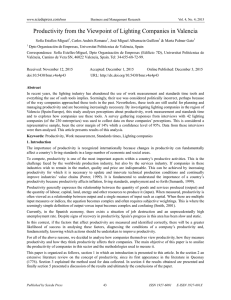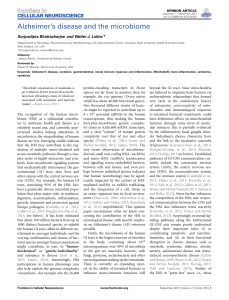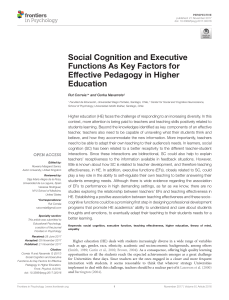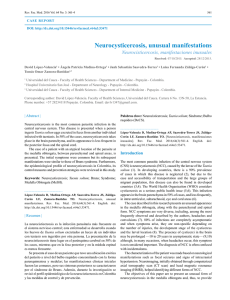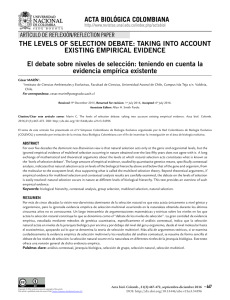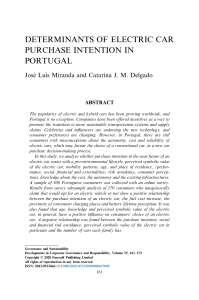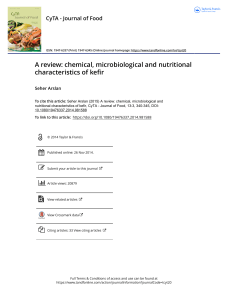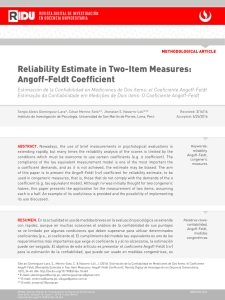Canvi climàtic - Usted no se lo cree
Anuncio
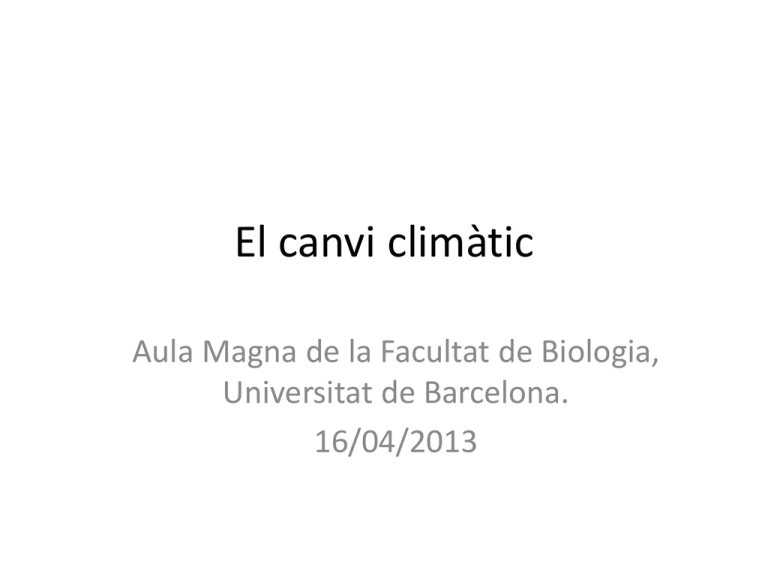
El canvi climàtic Aula Magna de la Facultat de Biologia, Universitat de Barcelona. 16/04/2013 L’espai operatiu segur Johan Rockström et al (2009) - A safe operating space for humanity - Nature 461:472-475 doi:10.1038/461472a - Stockholm Resilience Centre, Stockholm University - 29 authors Història de la ciència climàtica Font: Skeptical Science - http://www.skepticalscience.com – Imatge: John Garrett James E. Hansen and Makiko Sato (2011) - Paleoclimate Implications for Human-Made Climate Change - En: Climate Change: Inferences from Paleoclimate and Regional Aspects. A. Berger, F. Mesinger, and D. Šijački, Eds. Springer (In press) - NASA Goddard Institute for Space Studies and Columbia University Earth Institute http://www.columbia.edu/~jeh1/mailings/2011/20110118_MilankovicPaper.pdf Font: Skeptical Science - http://www.skepticalscience.com – Imatge: John Garrett William R. L. Anderegg et al (2010) - Expert credibility in climate change - Proceedings of the National Academy of Sciences PNAS doi:10.1073/pnas.1003187107 - Department of Biology, Stanford University http://www.pnas.org/content/early/2010/06/04/1003187107.full.pdf+html - 4 authors Papers 1991-2012 James Lawrence Powell - The State of Climate Science - Science Progress, 15/11/2012 - National Physical Science Consortium - http://scienceprogress.org/2012/11/27479/ La cadena causal Pertorbació – Resposta (1) Realimentació E (s) Concentració GHG ε (s) + S (s) G (s) - Temperatura mitja H (s) S (s) = ε (s) x G (s) ε (s) = G (s) / S (s) ε (s) = E (s) - S (s) x H (s) S (s) = G( s) 1 G( s) H (s) x E (s) Característiques dinàmiques • Amplificació (si realimentació positiva) o reducció (si realimentació negativa) de la perturbació • Resposta exponencial (no proporcional) • Posible retard entre perturbació i resposta (gairebé siempre) • Posible multiplicitat d’estats d’equilibri • Existència d’un llindar d’estabilidad • ‘Vida’ pròpia si ha entrat en zona inestable Pertorbació – Resposta (2) Will Steffen et al (2011) - The Anthropocene: From Global Change to Planetary Stewardship - Ambio: A Journal of the Human Environment 40:739-761 doi:10.1007/s13280-011-0185-x - ANU Climate Change, Institute at the Australian National University (ANU) - - 10 authors Resposta en temperatura Font: IPCC, 2007 14 Font: Skeptical Science - http://www.skepticalscience.com El CO2-òmetre > 35 Ma; +73 m Sense gel permanent ~ 35 Ma; +73 m; 45 ± 5 m Gel permanent a l’Antàrtida Preindustrial Darrer màxim glacial Richard Alley (2005) - Ice-Sheet and Sea-Level Changes – Science 310:456-460 doi:10.1126/science.1114613 Department of Geosciences and Earth and Environmental Systems Institute, Pennsylvania State University Escala de temps dels llaços PALAEOSENS Project Members - Making sense of palaeoclimate sensitivity - Nature 491:683–691 doi:10.1038/nature11574 http://www.purdue.edu/discoverypark/climate/assets/pdfs/Making%20sense%20of%20palaeoclimate%20sensitivity.pdf Sensibilitat climàtica Excés de curtosi Gerard H. Roe and Marcia B. Baker (2007) - Why Is Climate Sensitivity So Unpredictable? - Science 318:629632 doi:10.1126/science.1144735 - Department of Earth and Space Sciences, University of Washington 18 Salvador Pueyo, 2012 Salvador Pueyo (2012) - Solution to the paradox of climate sensitivity - Climatic Change doi:10.1007/s10584-011-0328-x Institut Català de Ciències del Clima (IC3) - http://link.springer.com/content/pdf/10.1007%2Fs10584-011-0328-x Projeccions S=1,5-2.0 °C Michael E. Schlesinger et al (2012) - A Fair Plan to Safeguard Earth’s Climate - Journal of Environmental Protection 3:455-461 doi: 10.4236/jep.2012.36055 - Published online: 01/06/2012 - Climate Research Group, Department of Atmospheric Sciences, University of Illinois at Urbana-Champaign http://www.scirp.org/journal/PaperDownload.aspx?paperID=20038 - 3 authors Fenòmens extrems Quirin Schiermeier (2011) - Climate and weather: Extreme measures - Nature 477:148-149 doi:10.1038/477148a http://www.nature.com/news/2011/110907/full/477148a.html Esdeveniments catastròfics naturals Font: Munich Re, 2012 23 Volum de gel a l’Àrtic Font: Skeptical Science - http://www.skepticalscience.com Son segurs + 2˚C? Joel B. Smith et al (2009) – Assessing dangerous climate change through an update of the Intergovernmental Panel on Climate Change (IPCC) ‘reasons for concern’ - Proceedings of the National Academy of Sciences PNAS 106:4133–4137 doi:10.1073/pnas.0812355106 – 15 autores Probabilitats ΔT a 2100 Andrei Sokolov et al (2009) - Probabilistic forecast for 21st century climate based on uncertainties in emissions (without policy) and climate parameters Journal of Climate 22:5175–5204 doi:10.1175/2009JCLI2863.1 - Joint Program on the Science and Policy of Global Change, Massachusetts Institute of Technology Anys 2060 “Si la retroalimentación con el ciclo del carbono fuera más fuerte, cosa que parece menos probable pero todavía creíble, el calentamiento de 4 ºC podría ser alcanzado en los primeros 2060, en base a predicciones consistentes con el ‘margen probable’ del IPCC.” [énfasis añadido] Richard A. Betts et al (2011) – When could global warming reach 4°C? – Philosophical Transactions of the Royal Society of London A 369:67-84 doi:10.1098/rsta.2010.0292 – Published online: 29/11/2010 – Met Office Hadley Centre – 6 authors 27 Gaia Vince (2009) - How to survive the coming century - New Scientist, Marzo 2009 http://www.newscientist.com/article/mg20126971.700-how-to-survive-the-coming-century.html Governments’ ambitions to limit warming to 2°C appear highly unrealistic ... We have passed a critical threshold … Even to have a reasonable prospect of getting to a 4°C scenario would imply nearly quadrupling the current rate of decarbonisation." Las sucesivas ediciones de este informe han demostrado que el objetivo climático de limitar el calentamiento global a 2 °C se hace más difícil y costoso de conseguir cada año que pasa. Even with the current mitigation commitments and pledges fully implemented, there is roughly a 20 percent likelihood of exceeding 4°C by 2100. If they are not met, a warming of 4°C could occur as early as the 2060s. Impactes a Europa Bernhard Lehner et al (2005) - The impact of global change on the hydropower potential of Europe: a modelbased analysis - Energy Policy 33:839–855 doi:10.1016/j.enpol.2003.10.018 Katherine Richardson et al (2009) - Global Risks, Challenges & Decisions - International Scientific Congress Climate Change - Australian National University, ETH Zürich, National University of Singapore, Peking University, University of California - Berkeley, University of Cambridge, University of Copenhagen, University of Oxford, The University of Tokyo, Yale University - http://www.climatecongress.ku.dk - 12 authors Richard Betts et al (2009) - 4°C global warming: regional patterns and timing - International Climate Conference: 4 Degrees and Beyond - Published online: 30/09/2009 - Hadley Centre for Climate Prediction & Research, Met Office La síndrome de Venus Hans Joachim Schellnhuber (2009) - Terra Quasi-Incognita: Beyond the 2°C Line - International Climate Conference: 4 Degrees and Beyond - Potsdam Institute for Climate Impact Research http://www.eci.ox.ac.uk/4degrees/ppt/1-1schellnhuber.pdf 35 Solució? James Hansen et al (2011) – The Case for Young People and Nature: A Path to a Healthy, Natural, Prosperous Future – Columbia University Earth Institute, New York –http://www.columbia.edu/~jeh1/mailings/2011/20110505_CaseForYoungPeople.pdf - 15 autors 36 Solució? Kevin Anderson and Alice Bows (2011) - Beyond ‘dangerous’ climate change: emission scenarios for a new world Philosophical Transactions of the Royal Society of London A 369:20-44 doi:10.1098/rsta.2010.0290 - Published online: 29/11/2010 - Tyndall Centre for Climate Change Research + School of Mechanical, Aerospace and Civil Engineering + School of Environmental Sciences and School of Development, University of East Anglia; Sustainable Consumption Institute, School of Earth, Atmospheric and Environmental Sciences, University of Manchester Gràcies. http://ustednoselocree.com @FerranPVilar Facebook: Usted no se lo Cree

